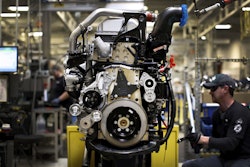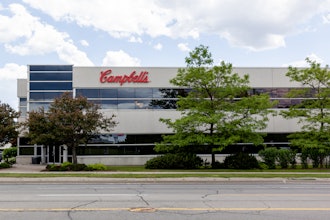When quickly responding to an increased product demand, a semiconductor company can adopt a borderless-fab strategy in order to expand process capacity without the need for significant capital investment. This strategy relies on factories having one or more identical process steps to allow capacity sharing as a starting point. “Identical” manufacturing processes across multiple mature fabrication sites may have significant differences in environment, automation and equipment. For the purposes of this article, we’ll use the example of two distinctly different manufacturing sites that needed to be harmonized (Table 1). Conventional wisdom would suggest simply matching to the “best” identified facility; however, this would involve stopping production and investing significant capital to upgrade. Since this was clearly not an option, we needed to identify and establish a standard for both factories to achieve while accommodating the unchangeable aspects of each.
Results and Discussion
Multiple systems exist that allow companies to implement lean manufacturing improvements in order to save money and increase efficiency. Visual 5S Management (Sort, Set, Shine, Standardize and Sustain) is one of the most commonly used systems. Normally this 5S methodology is a good starting platform for standardization; however, it is typically not executed beyond the limits of a visual implementation. We discovered that effective standardization of individual manufacturing flows across factories required a deeper and more holistic approach to 5S. In this article, we will present a case study where a holistic 5S strategy was used to successfully standardize the process flow, control methodology, automation code, and specification details of an LPCVD nitride deposition process across two distinctly different fabrication facilities. Comparative examples of the difference in outputs of Visual 5S and Holistic 5S approaches and the impact of these differences in enabling innovation will be discussed.
Sort – Typically, the Visual 5S “Sort” step involves “throwing away” unnecessary items. What do you do when each fab disagrees on what can be thrown away? How do you even know what is unnecessary? The Holistic 5S approach acknowledges the deficiencies in each factory and identifies the respective cost and missed opportunities caused by continuing with the status quo. This requires a humble approach by each team member and acceptance of the deficiencies. Move beyond the common statements of protest such as “it can’t be done,” “we don’t have time or resources,” “what is the bare minimum to just get this project off our plate,” or “that is the way we have always done it.” A cultural transformation is required to embrace the full extent of the changes needed to bring about success and eliminate non-value added steps.
Innovation Enabler: In contrast to the “seek and destroy” mindset of Visual 5S sort operations, Holistic 5S approaches this task with all options being potentially viable. This strategy allowed us to develop an innovative method of batching production lots at the furnace step (Patent Application Serial No. 14/570,623 filed December 15, 2014), where a single “universal” monitor lot is able to accommodate all process conditions for multiple different production flows (Figure 1). This innovative method has significantly increased direct labor saving year-on-year.
Set – Normally, the Visual 5S “Set” step involves organization of what is not discarded. The Holistic 5S approach identifies and addresses the critical care-abouts and does not simply reorder what is left. An honest approach to the change requirements is needed, ensuring that all stakeholders are fully engaged. All tribal knowledge and undocumented manufacturing behavior requires sorting and organization so that the optimal functions are identified to increase job efficiency.
Innovation Enabler: Incorporate what is needed and do not simply focus on what is not discarded. Using this approach, undocumented tribal knowledge was incorporated into and enforced in the automation code. Additionally, an innovative method of data transfer was developed which improved lot traceability and reduced manual interaction.
Shine – Usually, the Visual 5S “Shine” step involves cleaning up. The Holistic 5S approach not only cleans up but transforms the critical care-abouts into a “what you see is what you get” baseline. Perform a deep cleaning of processes to eliminate sources of waste and inefficiency, before clarifying the instructions to provide all employees with a better understanding of their equipment, processes, controls, and actions.
Innovation Enabler: Implement the “what you see is what you get” approach. This action essentially increases the knowledge base in the fab and empowers both the operator and process owner to improve the process further (Figure 2 and 3).
Standardize – Typically, the Visual 5S “Standardize” step involves maintaining known, agreed upon conditions after thoroughly implementing Sort, Set, and Shine. The problem with this approach is that it tends to be compartmentalized and becomes impractical to deploy beyond a core group. The Holistic 5S approach treats standardization as a dynamic and global approach to be future-proof, transferable, and a model for any and all affected factory areas.
Innovation Enabler: Think globally. Providing a standard specification template that can be used across multiple processes has allowed the changes to be easily implemented fab-wide (Table 6).
Sustain – Normally, the Visual 5S “Sustain” step involves utilizing 5S audits and assigned champions to ensure proper execution. The problem with this approach is that it does not empower the individual employee to maintain the full 5S methodology. It also does not take into consideration the knowledge gaps experienced by new or transfer employees. Without the ability to become self-maintaining, the entire 5S effort loses inertia and devolves back to original conditions.
Innovation Enabler: Do without being told. The Holistic 5S approach invests the means for self-management in each prior 5S step such that each employee is motivated to continue the 5S methodology without oversight.
Conclusion
A holistic approach to 5S lean implementation is an effective system in driving the successful standardization of process flows, automation codes, process control methodologies and spec details of process across two distinctly different fabs. Defining and managing the core processes required for fab-to-fab standardization is a key function in driving the improvement effort. This can lead to innovative solutions that increase cost savings, improve process performance and increase value-added benefits to customers.
Damien Gilmore, Nick Kusek, Kenneth Thomas, Robert Spangler, Michael Williams and Ram Gandikota, all of Texas Instruments, contributed to this piece. Damien Gilmore, Nick Kusek and Robert Spangler are diffusion fab engineers in DMOS5. Kenneth Thomas and Michael Williams are computer engineers responsible for furnace and metrology automation, respectively. Ram Gandikota is the controls engineer responsible for automated statistical process control of diffusion processes.
To read more manufacturing and technology news, sign up for our newsletter. You can also follow Manufacturing Business Technology on Twitter @MBTwebsite.
ENTRIES OPEN: Establish your company as a technology leader. For 50 years, the R&D 100 Awards, widely recognized as the “Oscars of Invention,” have showcased products of technological significance. Learn more.





















